74 Search Results for: Antarctic
Greenland melt natural or man-made?
And does it ultimately make any difference? Scientists from the University of Washington (UW) have published a paper in Nature estimating that up to half of the recent warming in Greenland and surrounding areas may be due to climate variations that originate in the tropical Pacific and are not connected with the overall warming of the planet. You can just hear the “I told you so”, from the climate skeptics. “Still”, the UW scientists add, “at least half the warming remains attributable to global warming caused by rising carbon dioxide emissions”.
With all due respect to the scientists who do this essential research – I repeatedly find myself wondering how we can talk about “natural” climate variations at all any more, given that we have changed the parameters so much you could argue none of it is really without human impacts. Does natural fluctuation not act differently if you are starting from completely different base data, brought about by man-made warming through greenhouse gas emissions?
Greenland and parts of neighboring Canada have experienced some of the most extreme warming since 1979, at a rate of about 1 degree Celsius per decade, or twice the global average, the scientists say. “We need to understand why in the last 30 years global warming is not uniform”, says first author Qinghua Ding, a UW atmospheric research scientist. “Superimposed on this global average warming are some regional features that need to be explained”.
The study uses both observations and advanced computer models. It comes to the conclusion that a warmer western tropical Pacific Ocean has caused atmospheric changes over the North Atlantic that have warmed the surface by about half a degree per decade since 1970. “The pattern of the changes in the tropical Pacific that are responsible for remarkable atmospheric circulation changes and warming in Greenland and the Canadian Arctic are consistent with what we would call natural variability”, says co-author David Battisti, a UW professor of atmospheric sciences.
Of course there will always be natural variability in the course of the seasons and changing meteorological conditions. But in many of the fastest—warming areas on earth, co—author of the new study John “Mike” Wallace, also professor at UW, says global warming and natural variations combine to create a “perfect storm” for warming.
The scientists attribute the natural variations in their study to an “unusually warm western tropical Pacific, near Papua New Guinea. Sind the mid-1990s the water surface there has been about 0.3 degrees hotter than normal. Computer models show this affects the regional air pressure, setting off a stationary wave in the atmosphere that arcs in a great circle from the tropical Pacific toward Greenland before turning back over the Atlantic”. Wallace says there are warm spots where the air has been pushed down, and cold spots where the air has been pulled up. And Greenland, he explains, is in one of the warm spots”.
This and other research by these scientists has documented the existence of decades-long climate variations in the Pacific Ocean which resemble the better known shorter-range El Nino variations. Other studies have indicated that waves starting in the same place in the tropical Pacific but radiating southward are warming West Antarctica and melting the Pine Island Glacier, which has been the subject here on the Ice Blog before.
The experts describe this natural variation as “unpredictable”, whereas the half of the warming in Greenland from the “forcing of climate by anthropogenic greenhouse gases” is “predictable”.
So what do we learn from all of this? One thing is clear. It does NOT change the threat to Greenland’s ice from our man-made warming: “Nothing we have found challenges the idea that globally, glaciers are reatreating, says Battisti. “Ice appears to be exquisitely sensitive to the buildup of greenhouse gases, more than we ever would have thought”, says his colleague Wallace.
Ultimately, the researchers say, natural variations could either accelerate or decelerate the melting rate of Greenland’s glaciers in coming decades. But, “in the long run, the human induced component is likely to prevail”.
So don’t let anybody use this as an excuse to talk down the need to cut emissions in a big way asap.
Greenland glacier at record speed
I have been working on a story about whether the Arctic infrastructure would be able to cope with a shipping or oil spill accident, which is increasingly likely to occur as development speeds ahead. During the Arctic Frontiers conference in Tromso, I attended an interesting workshop on the topic, where the organisers, the Arctic Institute Center for Circumpolar Security Studies, came to what their experts describe as “worrisome” conclusions. Malte Humpert, Kathrin Keil and Marc Jacobsen presented three incident scenarios involving shipping and oil exploration in the Arctic. Jacobsen’s scenario involved a giant cruise boat with 3000 people on board hitting an iceberg off the West Greenland Coast, near Ilulissat.
In 2009 I was in Ilulissat, working on radio features on climate change in Greenland. This is the Greenland of the tourist brochures, with a constantly changing panorama of icebergs floating past your hotel window – or porthole if you are on a ship. While I was there, the fragility of that beautiful glacier ice was brought home to me.
The Sermeq Kujalleq glacier, also still known by its Danish name “Jakobshavn Isbrae”, is the fastest flowing glacier in Greenland (or Antarctica, these two major ice sources being of key importance to global sea level). The icebergs which create the spectacle floating past the brightly coloured houses of Ilulissat, are breaking off from the glacier. Beautiful to look at, extremely worrying if you think about the background. Back in 2009, scientists were already telling me the glacier was speeding up. Now the latest research published in The Cryosphere (the journal of the European Geosciences Union) confirms that the summer flow of the ice mass has reached a record speed. The scientists, from the University of Washington in Seattle and the German Aerospace Center DLR, say the speeding up in 2013 was 30 to 50 percent higher than previous summers. The scientists analysed satellite images taken every 11 days from early 2009 to spring 2013. Satellite technology plays a key role in observing the ice. Two German radar satellites TerraSAR-X und TanDEM-X provide high resolution data that facilitates precise calculations, according to DLR. One of the authors, Dana Floricioiu from the DLR Earth Observation Center in Oberpfaffenhofen, told journalists it had been striking to see how much the glacier was changing within a very short time.
The researchers found that the glacier’s average speed peaked at 46 metres per day during the summer of 2012. This is the fastest ever recorded for a glacier in Greenland or Antarctica. The big surges take place in summer, but the researchers say the average annual speed of the glacier over the last two years is almost three times what was measured in the 1990s. It is retreating by around 17 kilometres per year. The scientists say these speeds were achieved “as the glacier terminus appears to have retreated to the bottom of an over-deepened basin with a depth of around 1300 m below sea level. The terminus is likely to reach the deepest section of the trough within a few decades, after which it could rapidly retreat to the shallower regions some 50 km farther upstream, potentially by the end of this century”.
The huge volume of ice going into the sea from the Sermeq Kujalleq glacier is already influencing sea level. The glacier drains around 6 percent of the massive Greenland ice sheet Scientists estimate it added about 1 millimetre to global sea levels from 2000 to 2010. The increased speed of the discharge will exacerbate this further.Badnews for people in low-lying coastal areas around the globe. And this is not the only Greenland glacier melting increasingly.
Coming back to the subject of disaster-preparedness – this glacier is thought to be the source of the iceberg that sank the Titanic in 1912. The Arctic Institute’s scenario indicates that an accident like the “Costa Concordia”, which happened in an easily accessible region with no ice or dangerous weather conditions, would have devastating consequences if it happened, say, off the coast of Ilulissat. Search and rescue, accommodation and medical treatment, lack of transport facilities, poor communications infrastructure, no adequate oil spill response technology for icy waters…. food for thought for companies looking to profit from the changing climate of the Arctic – and the governments that should be responsible for protecting humans, wildlife and that beautiful but fragile Arctic ecosystem.
Polar ice tipping points
As I get ready to head up to Tromso for the Arctic Frontiers conference and prepare my accreditation for the next routine round of climate talks here in Bonn in March, I find myself with plenty of food for thought.
It seems like not that long ago that scientists were telling us that although the Arctic is clearly melting fast, there was no need to worry about the Antarctic ice melting. But for the past 15 years or so, scientists have been observing that glaciers in West Antarctica are out of balance. Ice shelves have been breaking off and the calving fronts of glaciers have been retreating, draining huge amounts of ice into the ocean. This week I was interested and concerned to read about the results of a modelling effort, using 3 different types of model, indicating a key Antarctic glacier was melting irreversibly.
(Map courtesy of Deutsche Welle)
The Pine Island Glacier in the Antarctic hit the headlines last year when a giant iceberg broke off it. It is a key glacier because it is actually responsible for some 20 percent of the total ice loss from the region. Now scientists have found the glacier is melting irreversibly – with dramatic consequences for global sea levels. For an article for DW entitled Antarctic’s glacier retreat unstoppable, I interviewed Gael Durand of the French University of Grenoble, one of a team of scientists who have just published the new study: “We show that the Pine Island Glacier will continue to retreat and that this retreat is self-sustaining. That means it is no longer dictated by changes in the ocean or the atmosphere, but is an internal, dynamic process”, Durand told me. This will mean an increasing discharge of ice and a greater contribution to global sea level rise. “It was estimated at around 20 gigatons per year during the last decade, and that will probably increase by a factor of three or five in the coming decade. That means this glacier alone should contribute to the sea level by 3.5 to 10 millimetres a year, accumulating to up to one centimetre sea rise over the next 20 years. For one glacier, that is colossal”, says Durand.
I called up Angelika Humbert from Germany’s Alfred Wegener Institute for Polar and Marine Research (AWI) to get an expert opinion on the significance of the new research. She told me 1cm over 20 years would be an “extremely high” amount. The glaciologist, who is also working on models for the Pine Island Glacier, stresses that all models include a degree of abstraction and uncertainty. However, her work also indicates that the glacier will make an increasing contribution to sea level rise in the coming years and describes the new study as a “considerable advance on the results of research to date.” Humbert says the results could well be applied to other glaciers of the same type.
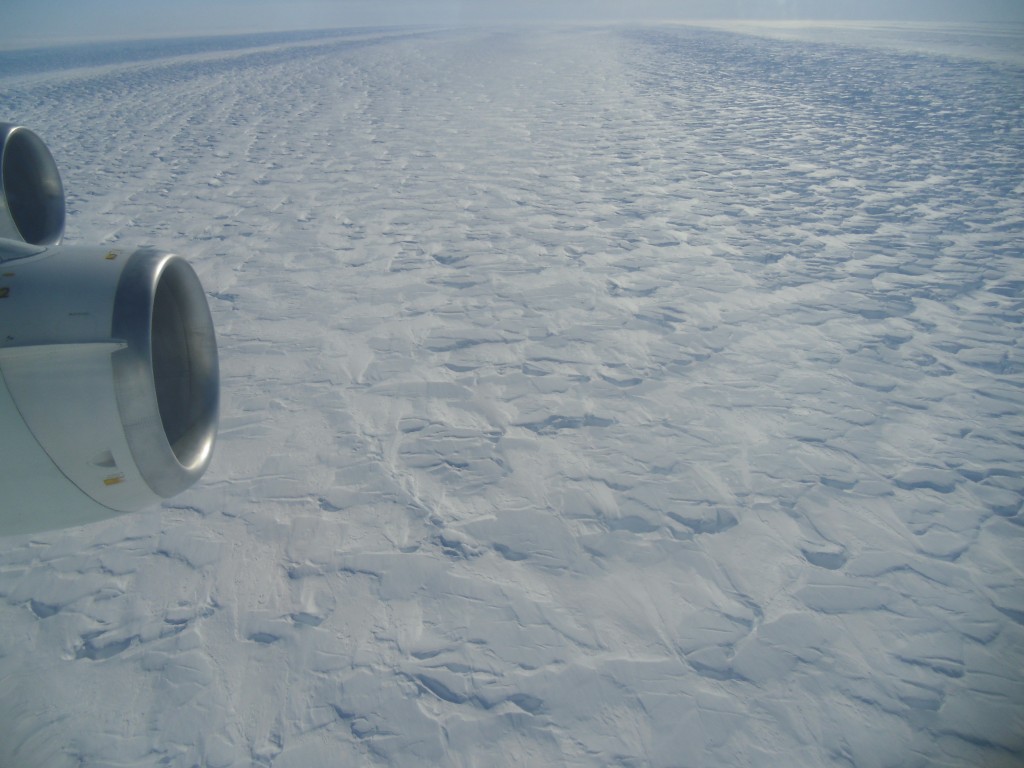
Angelika Humbert from AWI took this picture flying over the Pine Island Glacier in a NASA DC8 as part of the IceBridge campaign in 2011
Durand’s new study shows that the glacier is now flowing at a rate and in a way that makes the process irreversible. Even if the air and ocean temperatures cooled off to what they were a hundred years ago – which is in no way likely – Durand is convinced the glacier would not recover. Durand says the study should arouse concern because the glacier has passed a “tipping point”, a much discussed concept in climate science. “That means because of our behaviour, our climate is changing and will continue to change a lot. I think it is one of the first times we are passing these tipping points.”
The scientist compares the situation to that of a cyclist coming down from the top of a mountain and unable to brake: “We have to fear that the retreat will continue, that other glaciers in the region will start to do the same, and that we will have a collapse of this part of the ice shelf. That would take centuries, but it would mean a rise of several metres in sea level.”
The last report by the Intergovernmental Panel on climate Change (IPCC) warned of the implications if the glaciers of West Antarctica were to become unstable. “Here,” says Durand, “we have proof that that is already happening with this one.”
At the Arctic Frontiers conference two years back, I heard a lot of interesting discussions about climate tipping points. Professor Carlos Duarte Directorof the Oceans Institute at The University of Western Australia and Research Professor with the Spanish National Research Council (CSIC) talked to me at length about tipping points. Let me quote him briefly:
“Tipping Points – or thresholds – are levels of pressures beyond which small response of a property of interest becomes abrupt. Once a system or ecosystem or earth system crosses beyond a threshold, the changes, e.g. in the extent of ice or rate of warming, accelerate greatly, and once the threshold is crossed, it is sometimes very difficult to return to the original state even if pressure is released or reduced.”
We discussed the possible tipping points and warning signs outlined in a key piece of research by Timothy Lenton and others. Some would argue that tipping points have already been crossed in the Arctic region, which is known to be warming at least twice as fast as the rest of the earth. One of Lenton’s other key factors is the West Antarctic ice sheet becoming unstable. Now the “eternal ice” down south could be reaching a kind of “tipping point” in places. Yes, I know this only applies to a particular region of the West Antarctic, but the implications of irreversible glacier melt there are already huge. Greenland and that West Anarctic ice sheet play a key role in storing masses of fresh water, which would have huge implications if they melted. With marine glaciers, like the Pine Island Glaciers, the melt of white ice to expose more dark ocean surface underneath would further increase warming by absorbing solar heat instead of reflecting it back.
With the EU in the news today for considering moving away from binding climate targets, and little progress in sight towards an effective new climate agreement scheduled to be agreed in Paris in 2015, this all puts me in a pensive mood, as I get ready to head north and focus on the implications of the changing climate for “Humans in the Arctic”.
“On Thin Ice” at Warsaw climate talks
Did you know it was the “Day of the Cryosphere” at the Warsaw climate talks COP 19 in Warsaw yesterday? If not, you might be forgiven. I haven’t seen it making the headlines in the mainstream media. That is a pity, given that what climate change is doing to our ice, snow and permafrost has repercussions for the whole planet.
![]() read more
read more
Ice Blog back online!
Apologies for the absence of icy news on the blog over the past three months. I was collecting new stories and pictures of glacier development in the Swiss Alps during a hiking holiday and unfortunately slipped on some ice. It has taken me three months to recover, but before that I did take plenty of pictures, some of which will be appearing on the blog at some point in the next few weeks. I first visited that particular area in 1984, so have photos as well as memories of the glaciers as they looked then, and now. A comparison shows major changes. Many areas which were then iced over are now completely ice free.
In the meantime, of course, there has been no shortage of news and stories in the world at large relating to the polar regions and climate, including the annual sea-ice minimum measurements and the IPCC report.
As for the sea-ice measurements, the scientists from Germany’s Alfred Wegener Institute say the fact that the sea ice covered a bigger area than last year does not mean the ice pack is recovering. Its extent is still very low compared to the long-term average, and is in line with an overall trend towards less of the stable, thicker multi-year ice. A new study published this week suggests the Arctic will be ice-free in summer within 25 years. See this summary and context from the Climate News Network: Ocean damage is worse than thought.
The IPCC report includes a lot more data on developments at the poles, which was lacking in the last report. Ice melt from the Greenland and Antarctic ice sheets are shown to be playing a much greater role in increasing sea levels than previously thought. There’s a brief summarizing article on the DW environment page.
More on the “state of the ice” in the coming week. Please look out for regular posts from your Ice Blogger again from now on. It’s great to be back in action.



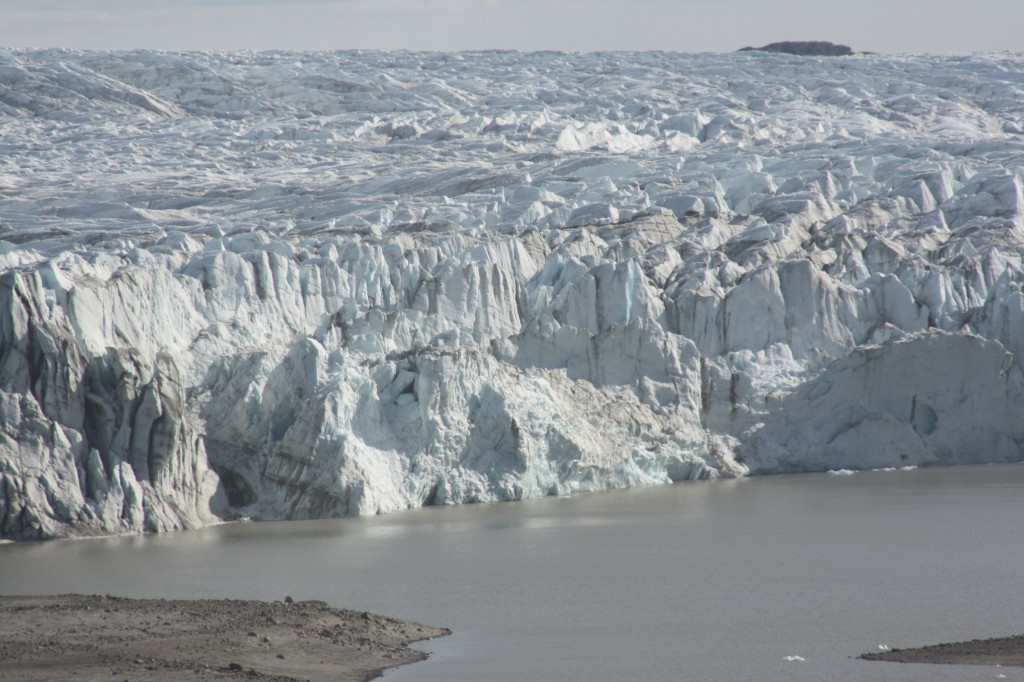
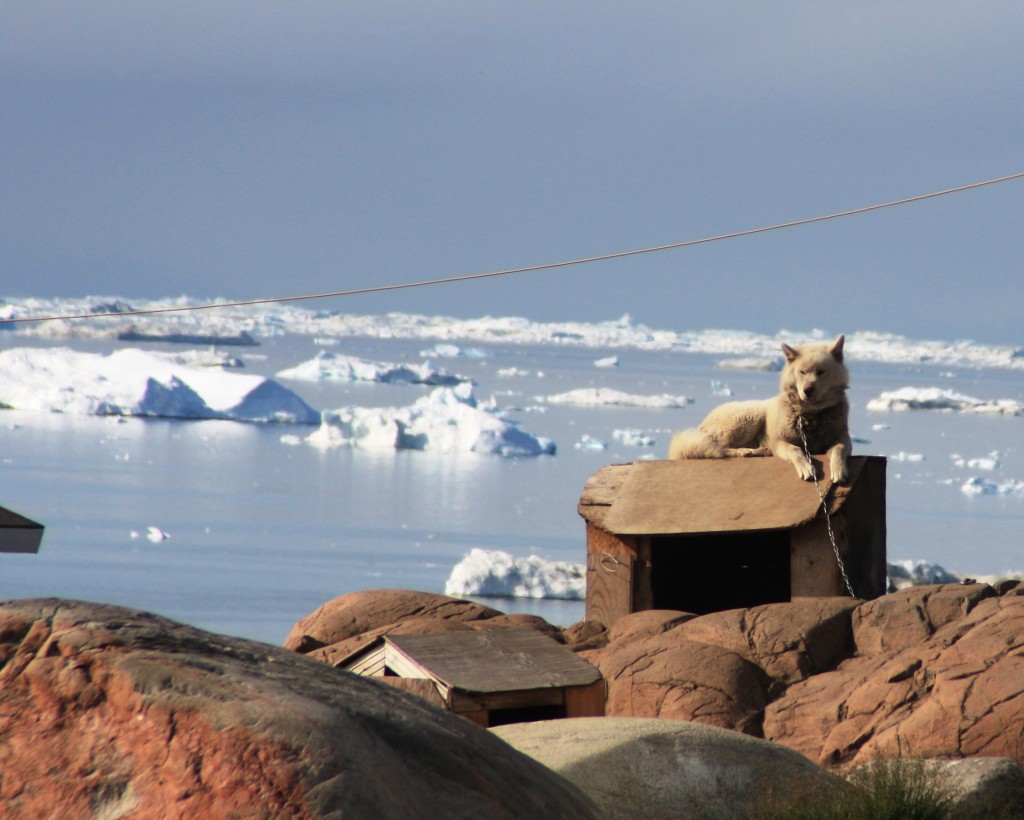

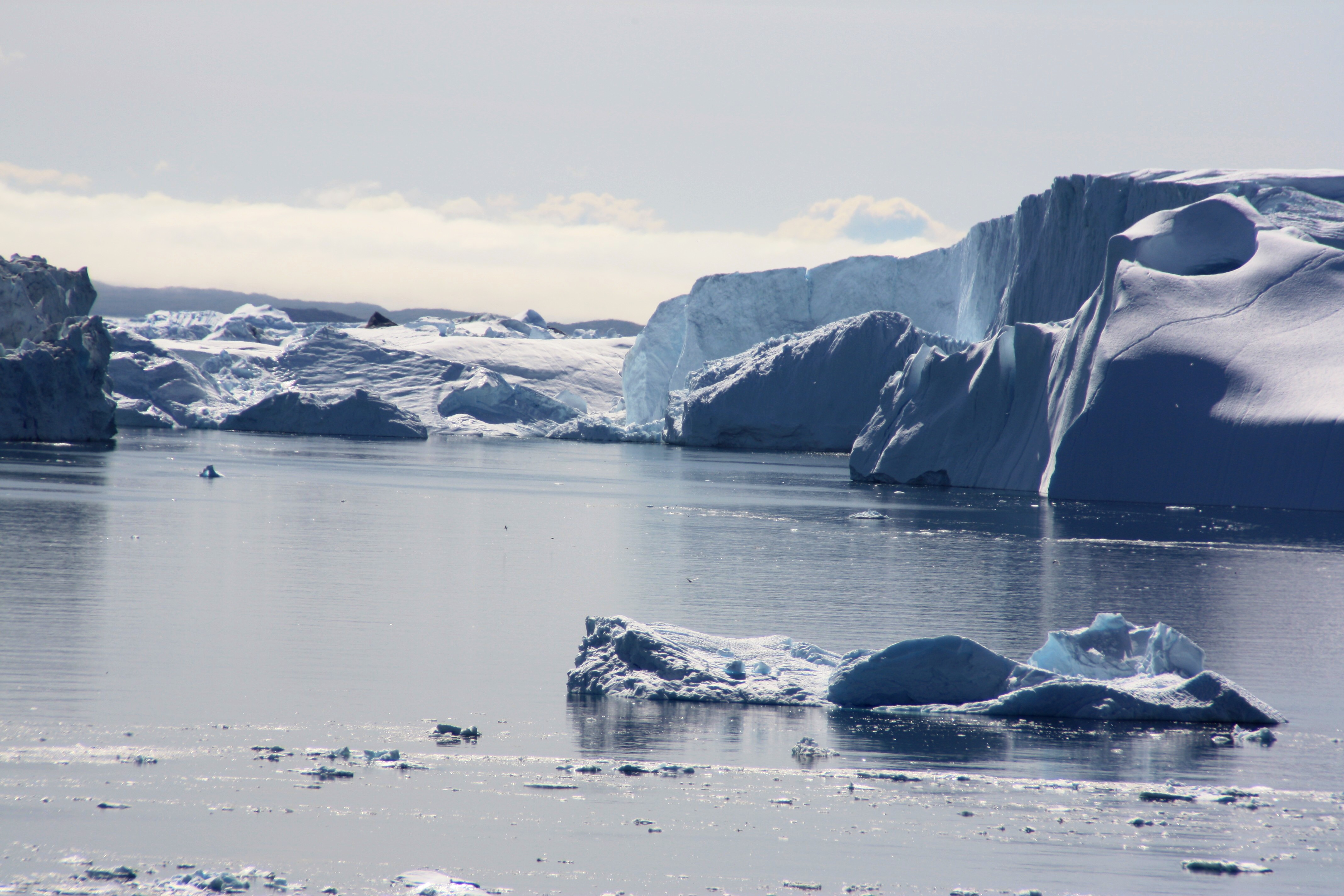
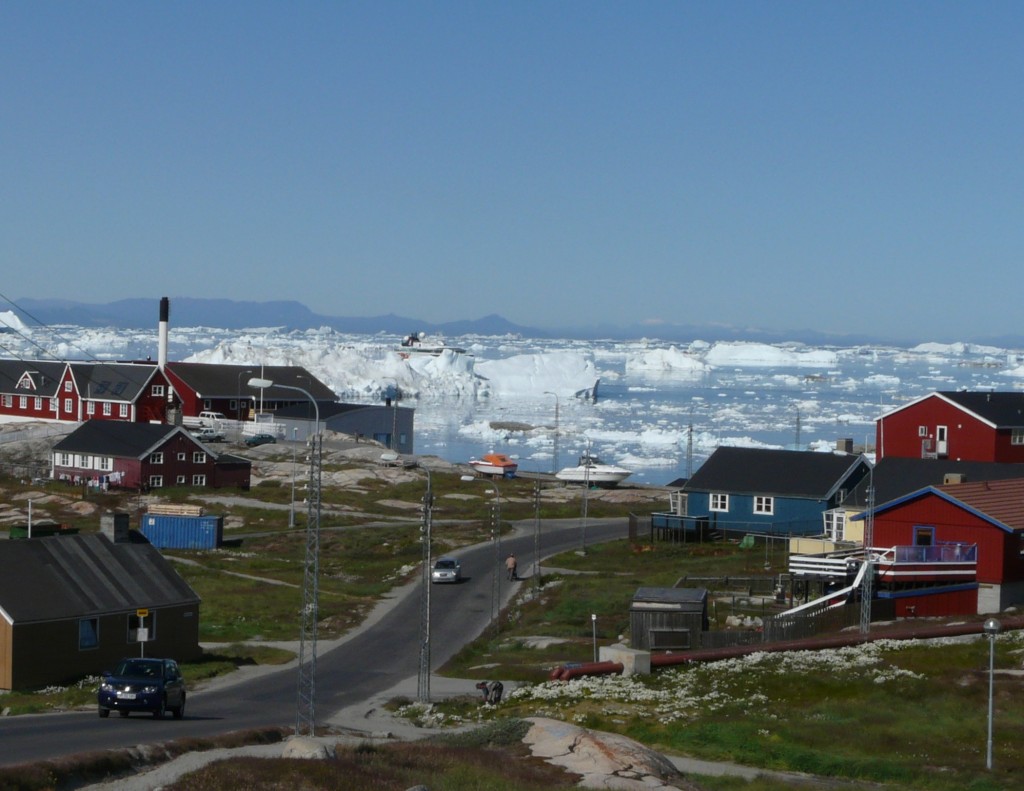
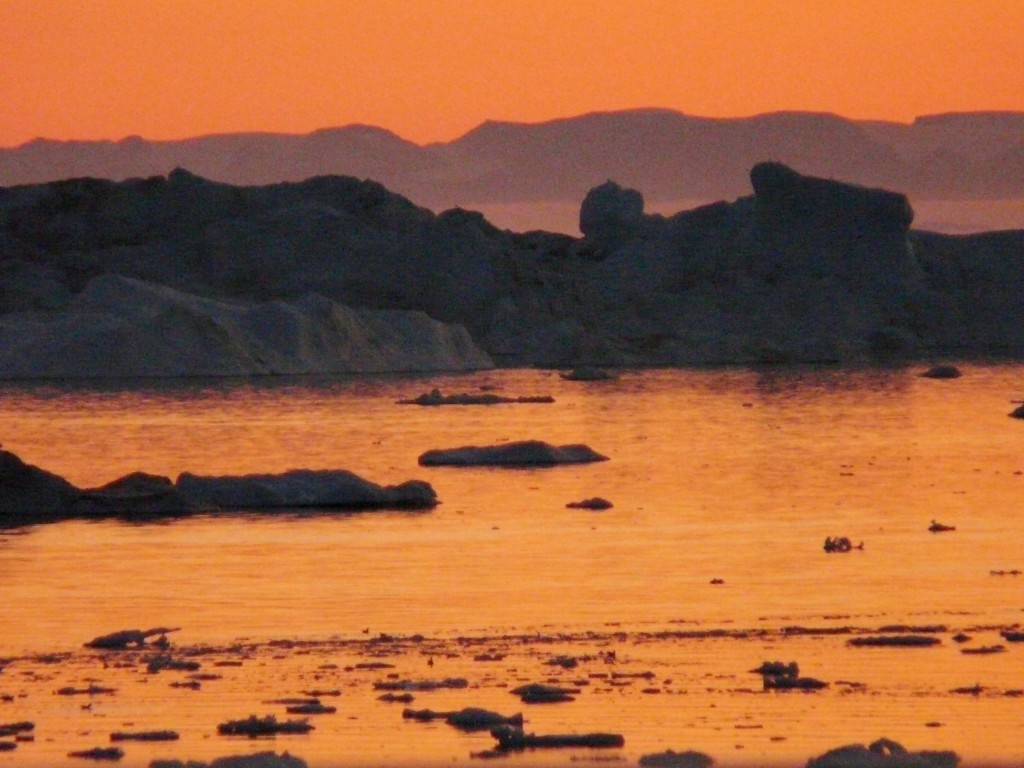

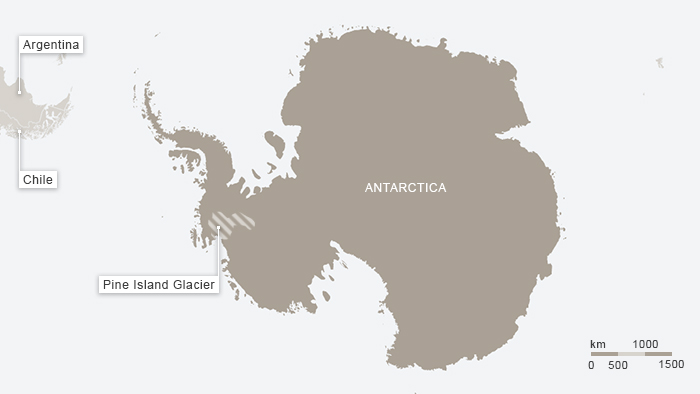
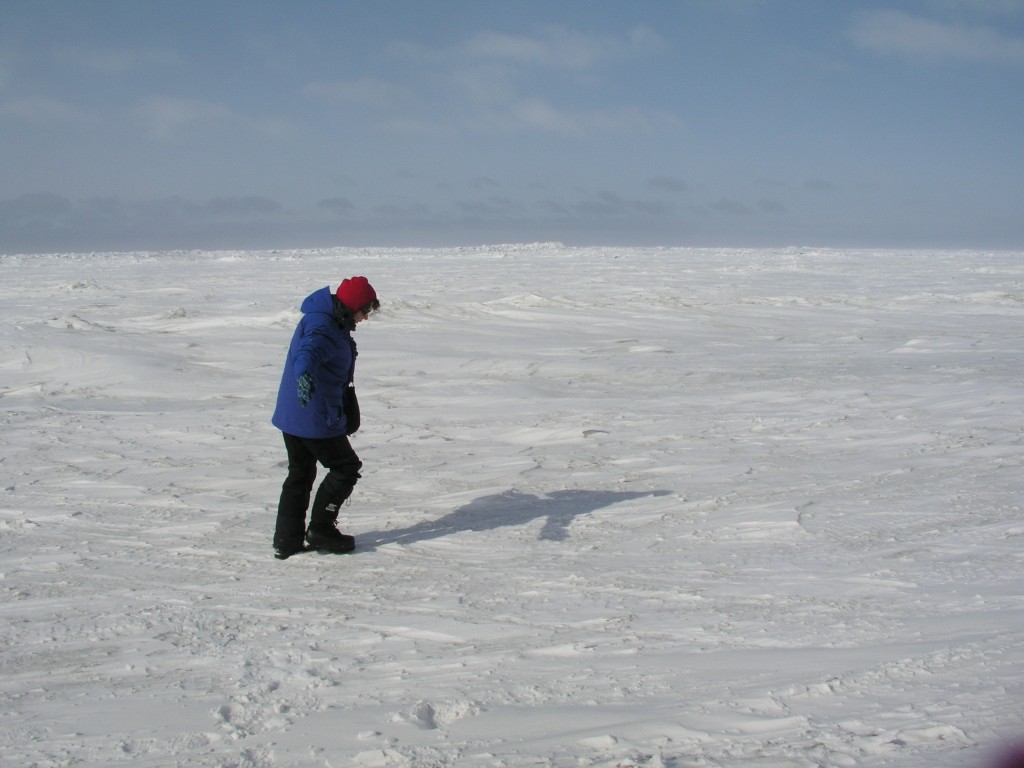
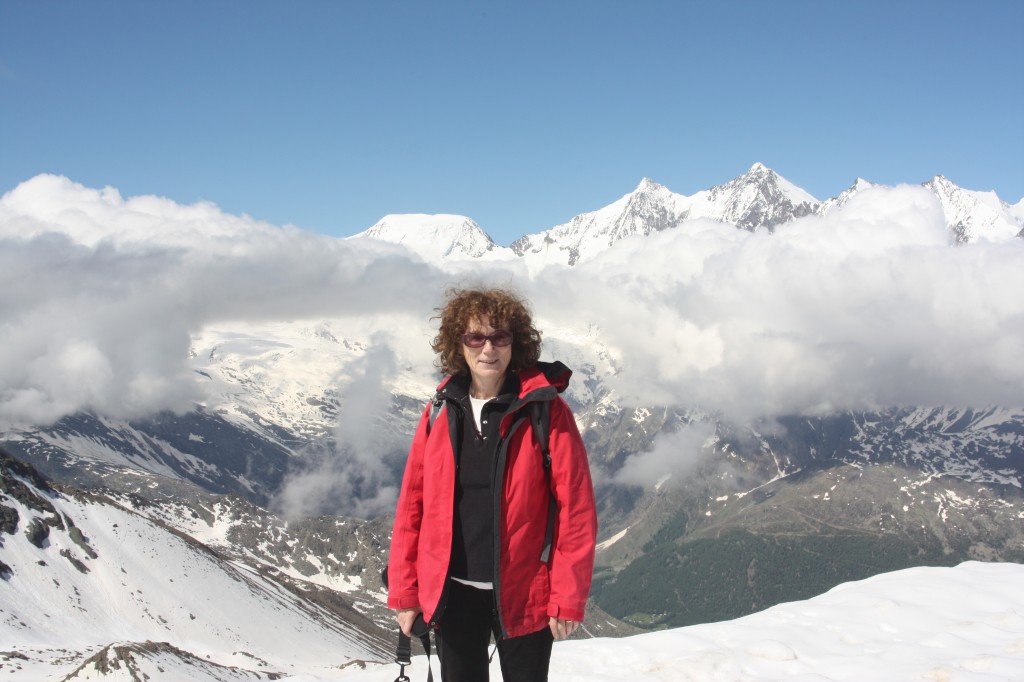

















Feedback